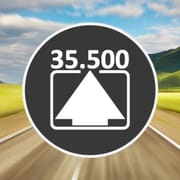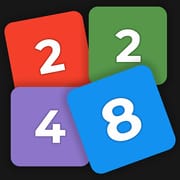JBV1 is a companion application for Valentine One and Valentine One Gen2 Radar Locators, designed to provide drivers with situational awareness and threat filtering. The app offers simultaneous display of frequency, signal strength, and direction for all located radar threats, voice announcements of new radar threats, and alert hold times for easier identification of brief alerts. JBV1 also tracks distance traveled or time elapsed since threat first located, provides real-time graphs of signal strength and orientation over time, and allows for alert snoozing to ignore a specific frequency regardless of location for up to one hour.
The app also offers background operation, alert logging with reports by day, time, and alert, and display of logged alerts to Google Maps. JBV1 includes profiles for V1 settings and custom sweeps/frequencies, automatic, speed-based V1 mode control, GPS-based lockouts of known false alerts, and GPS-based profile overrides that can change V1 settings automatically when you travel into or out of geographic areas you define. The app also offers GPS-based marking of red light cameras, speed cameras, and anything else, and displays critical V1 settings so you won't forget which bands are enabled or disabled.
JBV1 requires an ESP-enabled V1 or V1 Gen2 Radar Locator, and for V1s prior to V1 Gen2, JBV1 also requires one of the following Bluetooth adapters in order to talk to your V1: V1connection or V1connection LE. Both of these Bluetooth adapters are available from Valentine Research Inc. The app includes an optional Accessibility Service that is used to provide optional automation, such as splitting your screen after app startup or with voice control, locking your screen during app shutdown, and taking a screenshot with voice control.
JBV1 is the ultimate companion application for Valentine One and Valentine One Gen2 Radar Locators, offering drivers unrivaled situational awareness and threat filtering. The app provides a range of features, including simultaneous display of frequency, signal strength, and direction for all located radar threats, voice announcements of new radar threats, and alert hold times for easier identification of brief alerts. JBV1 also tracks distance traveled or time elapsed since threat first located, provides real-time graphs of signal strength and orientation over time, and allows for alert snoozing to ignore a specific frequency regardless of location for up to one hour.
The app also offers background operation, alert logging with reports by day, time, and alert, and display of logged alerts to Google Maps. JBV1 includes profiles for V1 settings and custom sweeps/frequencies, automatic, speed-based V1 mode control, GPS-based lockouts of known false alerts, and GPS-based profile overrides that can change V1 settings automatically when you travel into or out of geographic areas you define. The app also offers GPS-based marking of red light cameras, speed cameras, and anything else, and displays critical V1 settings so you won't forget which bands are enabled or disabled. JBV1 requires an ESP-enabled V1 or V1 Gen2 Radar Locator, and for V1s prior to V1 Gen2, JBV1 also requires one of the following Bluetooth adapters in order to talk to your V1: V1connection or V1connection LE.
JBV1 includes an optional Accessibility Service that is used to provide optional automation, such as splitting your screen after app startup or with voice control, locking your screen during app shutdown, and taking a screenshot with voice control. The app's privacy policy states that Valentine One, V1, and V1 Gen2 are registered trademarks of Valentine Research Inc., and Android is a trademark of Google Inc. The app's permissions include MODIFY PHONE STATE, READ PHONE STATE, and RECORD AUDIO, which are used only for specific purposes, such as enabling your device's speakerphone in some "force speaker" use cases, detecting when your device is in a phone call, and providing optional voice control.







 4.70
4.70 Download
Download
 APK
APK












